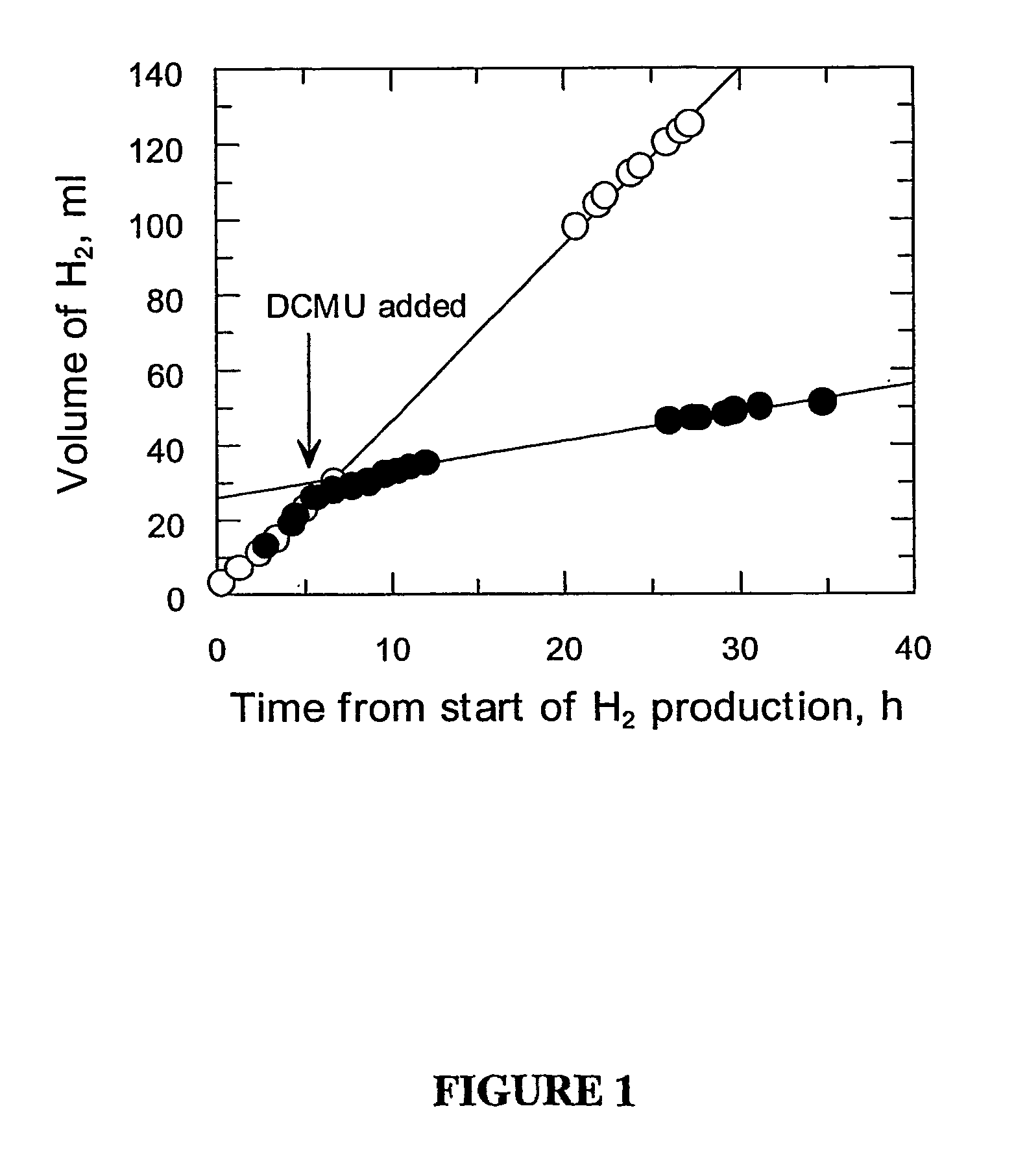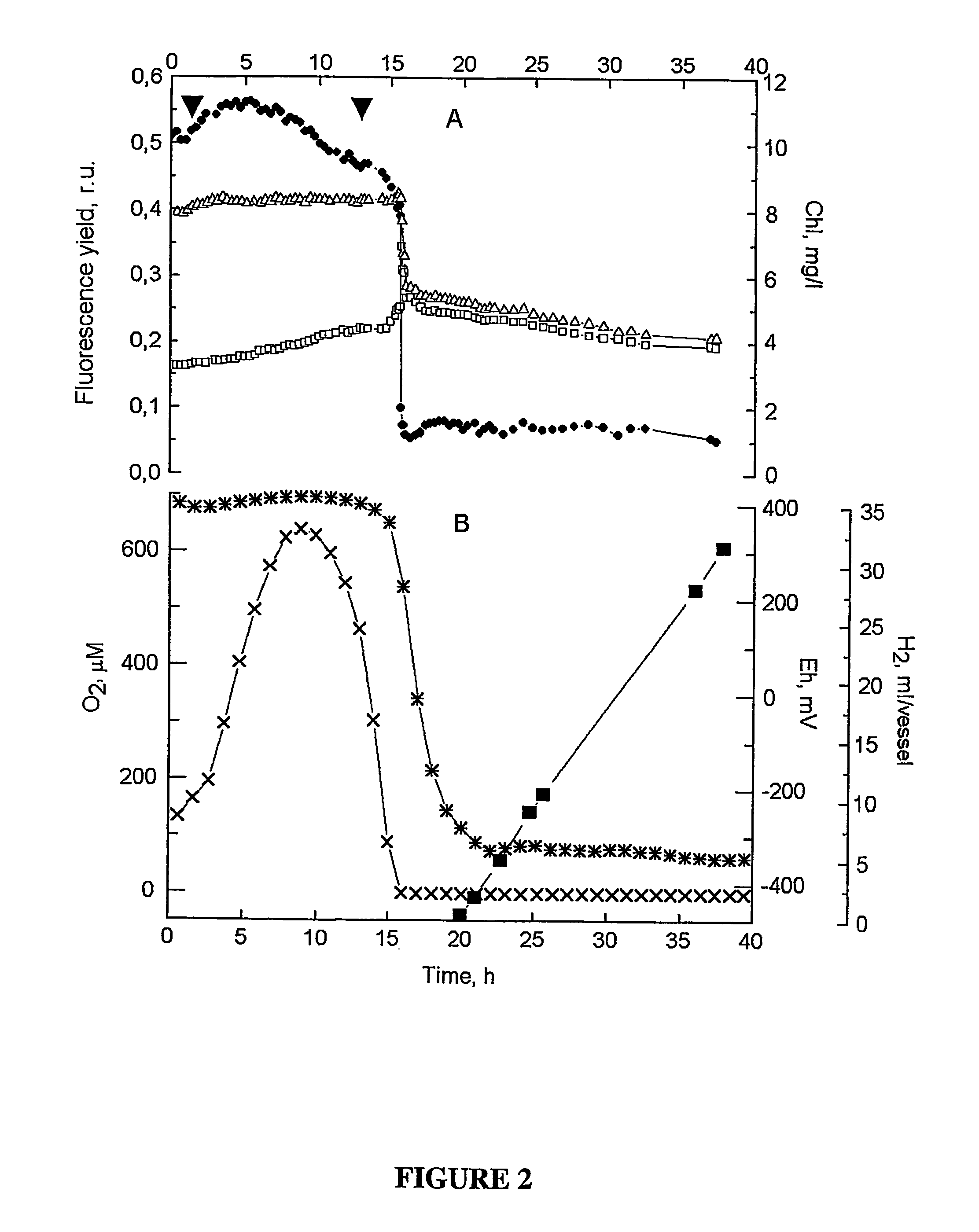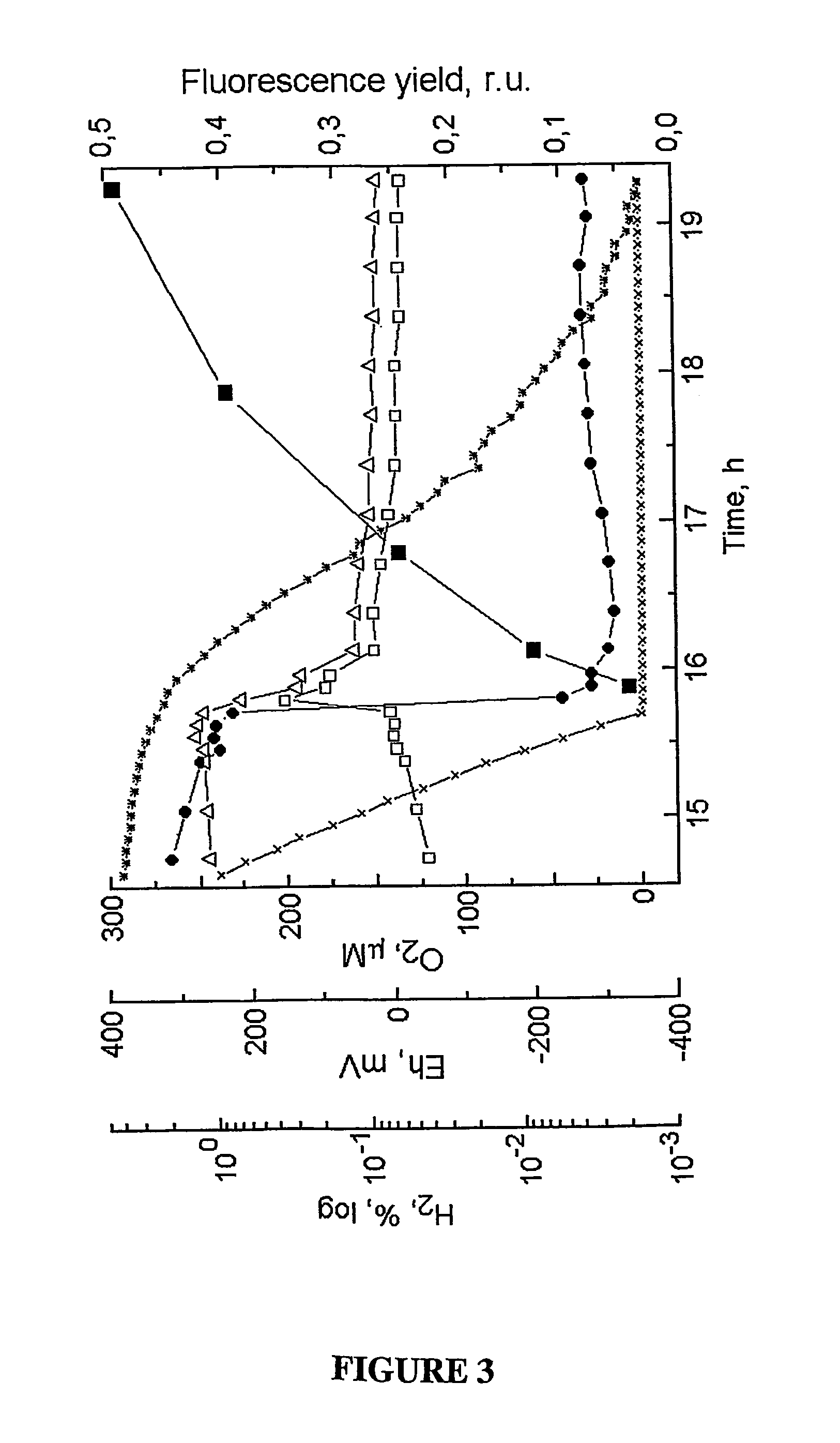Fluorescence technique for on-line monitoring of state of hydrogen-producing microorganisms
a technology of hydrogen-producing microorganisms and fluorescence, which is applied in the field of fluorescence technique for online monitoring of state of hydrogen-producing microorganisms, can solve the problems of state, the role of psii in h/sub>2, and the actual mechanism involved in the decrease of psii activity in sulfur-deprived cells during the time course, and the time-course of the decrease of psii activity in the h/sub
- Summary
- Abstract
- Description
- Claims
- Application Information
AI Technical Summary
Benefits of technology
Problems solved by technology
Method used
Image
Examples
Embodiment Construction
[0047]Chlamydomonas reinhardtii strain Dangeard C137+ was grown in Tris-acetate-phosphate (TAP) medium (pH, 7.0) under continuous cool-white fluorescent light. Late-log cells were pelleted three times by centrifiguation and re-suspended in the same medium, from which inorganic sulfure (TAP-S) was omitted. The cells were incubated under continuous fluorescent illumation (200-250 μE m−2 s−1 PAR) in cylindrical reactor vessels (600 ml) with a rotating glass rod and Teflon impellers for mixing. A magnetic bar was attached at the bottom of the rod to couple it to an external stirring motor, and the rate of mixing was 60-80 rpm. The vessels were sealed using a silicon stopper with an outlet tube inserted through it for gas collection. The gas produced by the cells was collected in an inverted graduated glass cylinder by water displacement.
[0048]To determine the precise moment of H2-photoproduction onset, we measured the percentage of H2 contained in the gas phase (˜7 ml) on the top of the...
PUM
| Property | Measurement | Unit |
|---|---|---|
| frequencies | aaaaa | aaaaa |
| frequencies | aaaaa | aaaaa |
| concentration | aaaaa | aaaaa |
Abstract
Description
Claims
Application Information
 Login to View More
Login to View More - R&D
- Intellectual Property
- Life Sciences
- Materials
- Tech Scout
- Unparalleled Data Quality
- Higher Quality Content
- 60% Fewer Hallucinations
Browse by: Latest US Patents, China's latest patents, Technical Efficacy Thesaurus, Application Domain, Technology Topic, Popular Technical Reports.
© 2025 PatSnap. All rights reserved.Legal|Privacy policy|Modern Slavery Act Transparency Statement|Sitemap|About US| Contact US: help@patsnap.com



